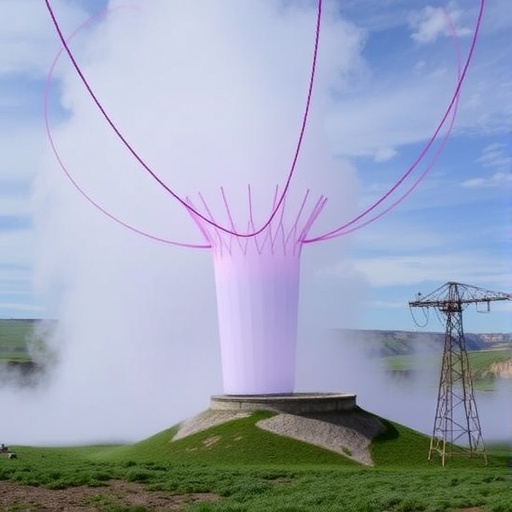Between 2008 and 2010, societies worldwide witnessed a startling surge in political and social polarization, coinciding with a dramatic transformation in how people connect socially. A recent study published in the prestigious Proceedings of the National Academy of Sciences delves deeply into this phenomenon, revealing a surprising relationship between the rapid increase in close interpersonal connections and the intensifying ideological divides that now fragment communities around the globe. Far from being a mere perception or media amplification, this polarization is a measurable, systemic shift underpinned by changes in social network structures.
The research centers on an intriguing paradox: during a period when the average number of close friends per individual nearly doubled—from about two to four or five—the fabric of society has simultaneously become more divided. This runs counter to classical sociological theories that predicted increased interpersonal connections should foster greater understanding and cohesion. Instead, the data suggest denser social networks may inadvertently catalyze social fragmentation by amplifying polarization.
Leading computational sociologists Stefan Thurner, Jan Korbel, and Markus Hofer of the Complexity Science Hub in Vienna developed a mathematical model to explore this counterintuitive dynamic. By harnessing decades of comprehensive survey data on political attitudes and friendship networks gathered from tens of thousands of respondents across Europe and the United States, they constructed a robust framework for quantifying polarization and social connectivity simultaneously. Their findings reveal that once a critical threshold in network density is crossed—roughly when people maintain more than three close relationships—a phase-transition-like effect occurs, radically amplifying polarization.
This phase transition concept, borrowed from condensed matter physics, analogizes societal shifts in polarization to physical changes such as water freezing into ice. Below a critical connectivity level, communities maintain fluid exchange and relative ideological balance; however, as network density increases beyond a tipping point, tightly knit social clusters form that are increasingly insular and polarized. This structural fragmentation effectively erects impermeable “bubbles” that inhibit constructive discourse between divergent political groups, thereby undermining democratic processes reliant on communication and compromise.
The timing of these shifts is particularly telling. The critical increase in the average number of close friends coincided almost exactly with the explosive growth of social media platforms and smartphone adoption between 2008 and 2010. Facebook’s accessibility and dominance as a communication hub are posited as key catalysts in expanding personal social networks. Yet, paradoxically, rather than bridging ideological gaps, these technologies may have reinforced echo chambers by encouraging preferential attachment within homogenous social groups, which in turn heightens conflict and polarizes opinions.
At the heart of this phenomenon lies a nuanced understanding of social tolerance. Maintaining a small circle of close friends, historically averaging two, demands high levels of mutual tolerance and effort to sustain those bonds across differences. With expanded networks, individuals face less social risk in severing ties when conflicts arise, given the availability of “backup” friends. This reduced tolerance threshold fuels social sorting and the selective exclusion of dissenting viewpoints, further entrenching polarization and diminishing the societal baseline for cooperative coexistence.
Analysis of over 27,000 political attitude surveys reveals significant shifts in partisan identification spanning nearly two decades. The proportion of individuals expressing consistently liberal or conservative views substantially increased between 1999 and 2017. At the same time, extensive survey data from sources such as the General Social Survey and the European Social Survey confirm the marked rise in close friendships, reaching an average of 4.1 by 2024. The convergence of these trends underscores the interplay between social network dynamics and ideological realignment.
Utilizing computational modeling techniques rooted in complex systems theory and network science, the researchers demonstrated that the abrupt polarization spike is not a random occurrence but an emergent property of increased social connectivity. Their model incorporated homophily—the tendency of individuals to associate with like-minded others—and simulated how increased close ties facilitate clustering into ideologically similar groups. The model accurately predicted real-world polarization trajectories, confirming the causal link between social network density and societal fragmentation.
These insights carry profound implications for democratic governance and social policy. Democratic systems thrive on broad engagement and dialogue across diverse social segments. However, the formation of dense, ideologically segregated clusters threatens to disrupt these mechanisms, leading to political gridlock, social unrest, and alienation. Recognizing the nonlinear dynamics at play empowers policymakers and civil society to devise strategies promoting tolerance and cross-cutting interactions that can counteract polarization’s destabilizing effects.
The study emphasizes the urgency of cultivating social resilience through education that fosters open-mindedness and constructive engagement with differing opinions. Moreover, it invites critical reflection on the role of digital platforms in shaping social networks. While social media has democratized communication in many respects, its contribution to network densification and pocketing of ideologies suggests a double-edged influence that warrants nuanced regulation and design improvements.
In conclusion, the intersection of increased social connectivity and rising polarization reveals a complex social phase transition with significant consequences for contemporary societies. By elucidating the threshold effects and feedback loops inherent in social networks, Thurner and colleagues provide a groundbreaking framework to understand and ultimately mitigate the fragmentation that threatens democratic life. Their work underscores the pressing need to balance connectivity with cohesion, ensuring that the bonds linking societies are not only numerous but also conducive to tolerance and unity rather than division.
Subject of Research: People
Article Title: Why more social interactions lead to more polarization in societies
News Publication Date: 31-Oct-2025
Web References:
http://dx.doi.org/10.1073/pnas.2517530122
References:
Thurner, S., Hofer, M., & Korbel, J. (2025). Why more social interactions lead to more polarization in societies. Proceedings of the National Academy of Sciences. https://doi.org/10.1073/pnas.2517530122
Image Credits: Complexity Science Hub
Keywords: Social networks, Phase transitions, Homophily, Social network theory, Computational social science, Network science, Physics




